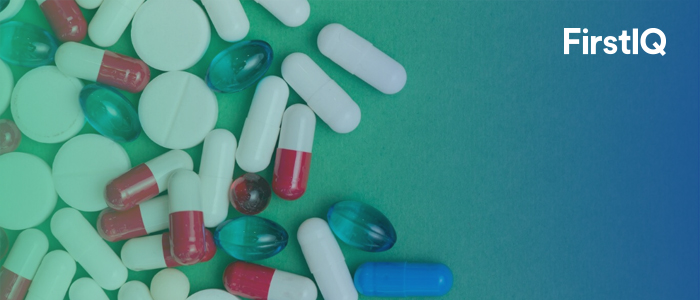Pills, Profits & Pitfalls: Indian Generics Facing Dual Picture

Generic drugs are the prime pillars of Indian pharmaceutical market. A well-dedicated focus of government from development to supply of generic drugs plays a crucial role in the growth of the generic drugs market in India. In addition, the domestic business, India is a prominent supplier of generic drugs at international level. India meets 20% of global demand for generic drugs, where U.S. market accounts for highest percentage, whereas UK market ranks second, and the export is steadily increasing for U.S. as well as UK. This surge in demand for Indian origin non-proprietary drugs across the globe is potentiating India’s capacity to manufacture and supply non-proprietary drugs.
Dr. Mansukh Mandaviya, Minister of Labour & Employment said, “We have become “Pharmacy of the World” by specializing in generic medicine formulation and by manufacturing, and supply of affordable medicine to the world”.
The graph below represents the growth of Indian pharmaceutical sector over 5 years.
Graph: Indian Pharmaceutical Sector Turnover, 2019-2024
Source: Pharmatrac/NPPA/DGCIS, Kolkata
Key Takeaways
- Continuous growth of pharmaceutical sector in India is being observed over the last five years, owing to rising number of startups in pharmaceutical sector and preference by patients for non-proprietary drugs over branded drugs.
- 10% growth consistency has been maintained in the last 4 years, owing to an increase in manufacturing capacity with respect to assets as well as workforce, expansion of manufacturing sites, and government initiatives such as Pradhan Mantri Bhartiya Jan Aushadhi Yojna.
- This year-on-year growth of Indian pharmaceutical sector is also associated with the export of generic medicines at international level. This export of non-proprietary medicines has made India one of the leading pharmaceutical sectors across the globe.
"Prices of medicines sold through 'Pradhan Mantri Bhartiya Janaushadhi Kendras' are 50 to 90 percent less than branded medicine prices in the open market,” said Dr Bharati Pravin Pawar, Minister of State for Health.
Government Schemes Bridging the Medicine Cost Effectiveness Gap
- March 2025: Government generic drug stores helped households in Assam and Rajasthan to save a notable percentage on medical bills. Government’s initiative has revolutionized the price of drugs by making it cheaper than the price of branded drugs.
- March 2025: Pharmaceutical companies in India are set to bring a dramatic revolution in diabetes treatment. The companies are going to launch generic version of the patent expired drugs in a most affordable way.
- December 2024: The Indian government has tied a knot to supply various types of medicines in an affordable manner. The government announced opening of 14,000 Pradhan Mantri Bhartiya Janaushadhi Kendras (PMBJKs) that has brought 300 surgical devices and 2,047 types of medicines.
Dr Mansukh Mandaviya, Minister of Labour & Employment said, “The world has started recognising us and giving importance to our work and accepting it, as a result of the vision of our Hon’ble Prime Minister Narendra Modi ji and our work in that direction”.
However, the global scenarios are impacting the export of India based generic medicines. As India is one of leading supplier of non-proprietary medicines across the globe, specifically U.S. and UK, the trade disputes are harming one of strong corner of Indian economy.
- February 2025: U.S. is about to announce 25% tariffs on pharmaceutical imports. A high percentage of tariffs will affect the Indian pharmaceutical market, as the percent profit from export of pharmaceuticals will be reduced.
- April 2025: Wockhardt is planning to exit generic segment in U.S. by considering the burden of tariffs. The ongoing tariff war being played by U.S. is making the manufacturers to withdraw their business of generics with U.S.
"I'm not sure tariffs should dictate what we should be doing as players, because there is a risk that four years later, those tariffs may go away," said Umang Vohra, Cipla Global CEO.
Impact of domestic & international scenarios on generics market in India:
- Government’s strong approach to bring patent expired medicines to low cost will reflect an increase in adoption of generic medicines, further resulting in an increase in manufacturing capacity and domestic growth of pharmaceutical companies.
- Low-and middle-income families and families from slum areas will benefit from required medications and devices due to low prices.
- At international level, if the tariff disputes continue to be in the scenario, it will affect the Indian pharmaceutical sector with respect to export, as the demand for India based generics is high across the globe.




